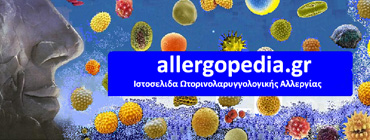MECHANISMS AND CLINICAL EFFICACY OF SUBLINGUAL IMMUNOTHERAPY
 |
|
Gelis N. Dimitrios, Otorhinolaryngologist, MD, DDS, PhD, Korinthos, Greece, former President of the Greek Association of Otorhinolaryngologic Allergy, Immunology and Rhonchopathies, Korinthos, Greece pharmage@otenet.gr
|
Introduction: Allergen immunotherapy provides an opportunity to study antigen-specific tolerance in man. Subcutaneous immunotherapy suppresses allergic TH2-mediated" inflammation and increases antigen-specific IgG probably by induction of Τ regs. immune deviation (TH2 -» THl) and/or apoptosis of Τ cells.
Oral mucosa is a natural site of immune tolerance (Langerhans cells, FcfRl, IL-10, I DO [indoleaminc 2,3-dioxygenase]). Sublingual immunotherapy (SLIT) in optimal doses is effective and may induce remission after discontinuation and prevent new sensitizations, features consistent with induction of tolerance.
Sublingual immunotherapy is associated with: retention of allergen in sublingual mucosa for several hours, marked early increases in antigen-specific IgE, blunting of seasonal IgE, modest increases in antigen-specific IgG4 and IgE-blocking activity, inhibition of eosinophils, and reduction of adhesion molecules in target organ.
Some evidence of increase in peripheral Τ cell IL-10. SLIT induces modest systemic changes consistent with SCIT, but additional local mechanisms in oral mucosa and/or regional lymph nodes are likely important.
Material and methods: Up to June 2009, there were 60 DBPC-RCTs of SLIT, of which 41 conducted with grass or Η DM extracts. The majority of these studies is heterogeneous for allergen dose, duration and patients' selection. 48 trials provided overall positive results and 12 were totally or almost totally negative. The literature suggests that overall, SLIT is effective, although differences exist among allergens.
Conclusion: The available meta-analyses are in favour of SLIT (rhinitis in adults, asthma and rhinitis in children), although the conclusions are limited by the great heterogeneity of the studies. The clinical efficacy and dose dependency have been demonstrated, in adequately powered, well designed DBPC-RCTs, for rhinoconjunctivitis due to grass pollen.
References
Gelis Dimitrios. Mechanisms and clinical efficacy of sublingual immunotherapy. Abstract Book.of VII Balkan Congress of Otorhinolaryngology, Head and Neck Surgery, Nis, Serbia June















